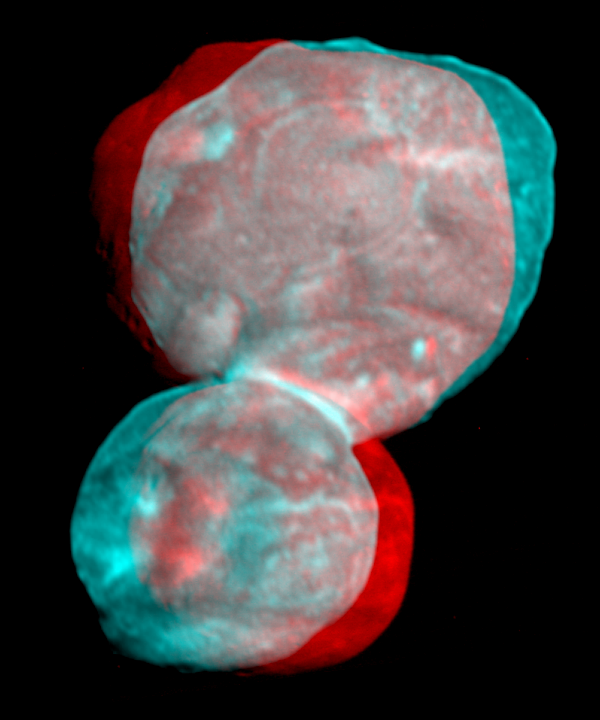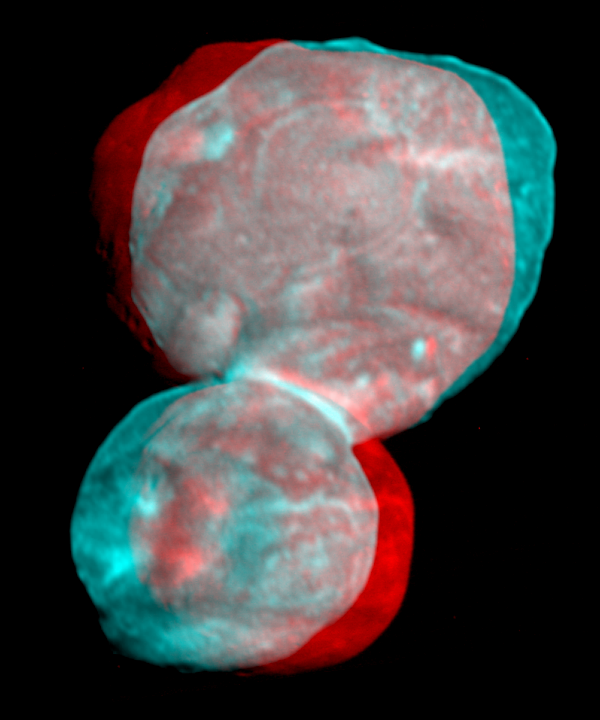Arrokoth (2014 MU69) in Stereo

| Credit | NASA/Johns Hopkins University Applied Physics Laboratory/Southwest Research Institute/National Optical Astronomy Observatory |
|---|---|
| Historical Date | January 1, 2019 |
| Language |
|
Update November 2019: 2014 MU69 has been officially named Arrokoth.
This image of 204 MU69, nicknamed Ultima Thule, can be viewed with red-blue stereo (3D) glasses to reveal the Kuiper Belt object's three-dimensional shape.
The 3D effects come from pairing or combining images taken at slightly different viewing angles, creating a “binocular” effect, just as the slight separation of our eyes allows us to see three-dimensionally. For the images on this page, the New Horizons team paired sets of processed images taken by the spacecraft’s Long-Range Reconnaissance Imager (LORRI) at 5:01 and 5:26 Universal Time on Jan. 1, 2019, from respective distances of 17,400 miles (28,000 kilometers) and 4,100 miles (6,600 kilometers), offering respective original scales of about 430 feet (130 meters) and 110 feet (33 meters) per pixel.
The viewing direction for the earlier sequence was slightly different than the later set, which consists of the highest-resolution images obtained with LORRI. The closer view offers about four times higher resolution per pixel but, because of shorter exposure time, lower image quality. The combination, however, creates a stereo view of the object (officially named 2014 MU69) better than the team could previously create.

